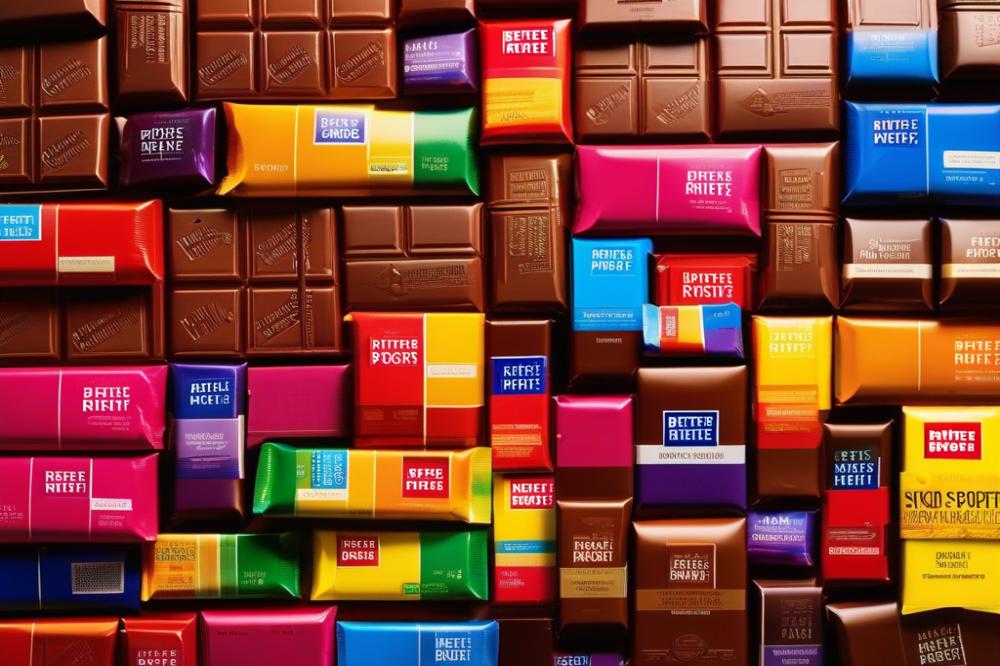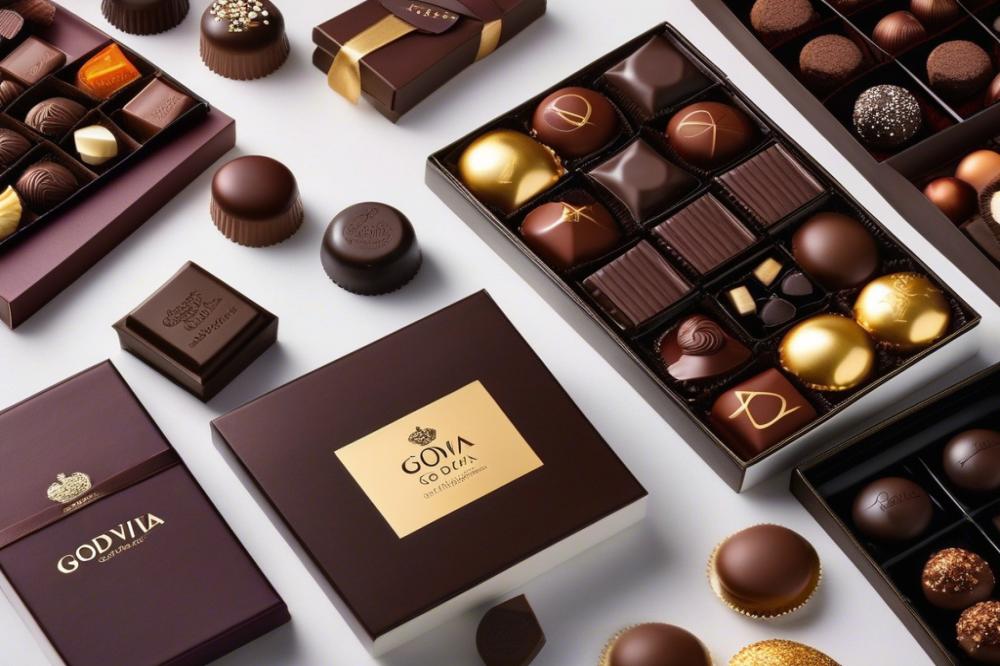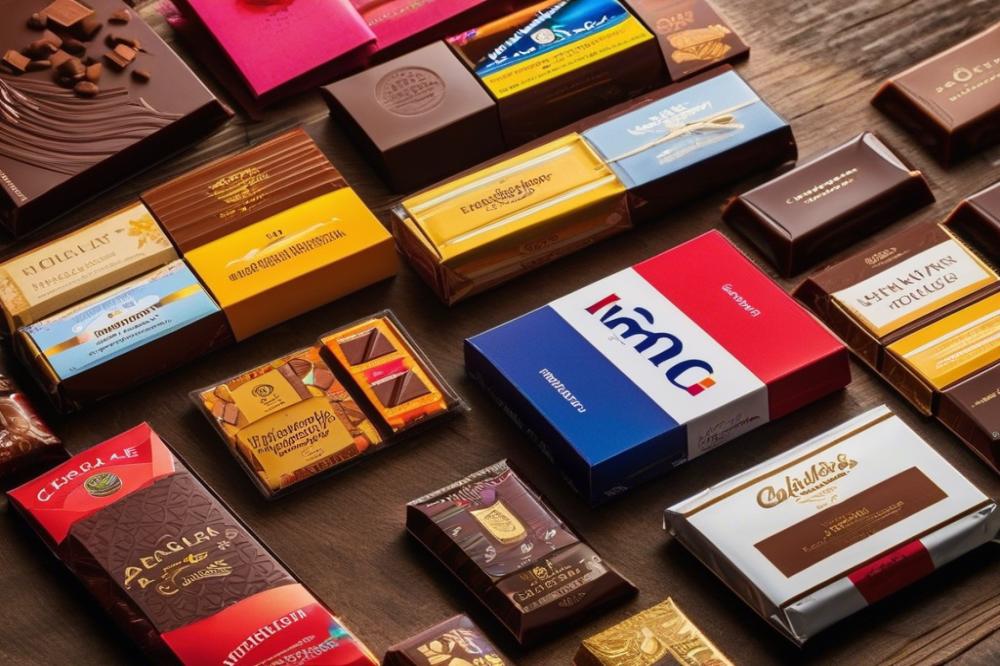Introduction
Ritter Sport stands out as a notable player in the chocolate brand landscape, especially recognized for its square chocolate. Originating from Germany, this company has built a strong reputation over the years. Known for its distinctive packaging and high-quality ingredients, it appeals to many consumers worldwide. The key to understanding its success lies in its global popularity.
Looking at the snack market reveals the increasing importance of brands like Ritter Sport. chocolate bars have become more than just treats; they embody cultural connections and personal choices. Therefore, assessing the global appeal of this brand offers insight into current confectionery trends. It also allows a deeper look into consumer preferences across different regions.
Furthermore, the variety of flavors available enhances the brand’s attractiveness. From classic milk chocolate to adventurous combinations, there is something for everyone. With a focus on sustainable sourcing, Ritter Sport has also adapted to changing consumer values. The alignment of brand values with customer expectations plays a crucial role in international sales.
Ultimately, viewing Ritter Sport through the lens of its distinct identity helps to contextualize its position among famous chocolate bars worldwide. This examination brings to light what contributes to the success of a brand in an ever-evolving market, making it relevant for both chocolate lovers and industry experts alike.
The Rise of Ritter Sport

History and Origins of Ritter Sport
Ritter Sport began its journey in 1912 in Germany. Founded by Clara and Alfred Ritter, this chocolate brand quickly became known for its quality. Their first factory was in a small city called Waldenbuch. Both Clara and Alfred wanted to create a chocolate that was both delicious and accessible. Over the years, their passion for confectionery grew. By the 1930s, the company had a solid reputation for producing fine chocolates.
Development of the square chocolate Concept
The breakthrough came in 1932 when the square chocolate bar was introduced. This shape was innovative at the time and stood out among traditional chocolate bars. It allowed for a convenient snack that fit easily in lunchboxes. Consumers quickly appreciated the practicality and the ability to enjoy various flavors. Flavor variety became a hallmark of the brand. Today, options include everything from classic milk chocolate to adventurous mixtures with fruit and nuts.
How German Chocolate Craftsmanship Influences Its Reputation
German chocolate is known for its high standards and rich traditions. The craftsmanship influences every stage of production. Sourcing ingredients sustainably has become a priority for the company. This dedication to quality has helped boost international sales. Each bar reflects the skill and attention to detail of chocolatiers. As market trends shift, so do consumer preferences. People now seek more than just taste; they want brands that support ethical practices. For many, Ritter Sport stands as a symbol of both flavor and responsibility in the snack market.
Unique Packaging and Flavor Variety

The square shape of Ritter Sport chocolate is more than just a design choice. This distinctive packaging sets it apart from other confections on shelves. Consumers often recognize the bold, colorful wraps that hold the chocolate inside. Such a design enhances visibility and attracts attention in a crowded snack market.
Flavor variety plays a significant role in its global popularity. The brand offers an array of flavors, ranging from the classic milk chocolate to exciting combinations like raspberry and yogurt. Choices cater to a wide range of taste preferences, ensuring that there is something for everyone. For many, trying out new and exotic flavors is part of the fun.
Consumer preferences drive Ritter Sport’s ability to remain competitive. The increasing demand for diverse and innovative snacks influences which flavors are developed each year. People want options that are not only delicious but also unique. Trends in the confectionery industry show a strong move towards flavors that reflect global tastes and interests.
In addition to flavor, sustainable sourcing stands out as a relevant aspect of the brand’s identity. Shoppers today consider the origins of their food. This focus on ethical sourcing aligns with modern consumer values. Chocolate lovers appreciate companies that prioritize their impact on the environment.
International sales reveal the brand’s effectiveness in reaching markets worldwide. Ritter Sport manages to combine quality products with appealing presentation. Such strategies contribute to its lasting presence in a competitive chocolate brand landscape. Across continents, the love for this square chocolate continues to grow.
Sustainable Sourcing and Ethical Practices
Commitment to Sustainable Sourcing of Ingredients
Sustainable sourcing is a crucial part of many modern brands, including the one discussed here. This German chocolate company has made significant efforts to procure ingredients responsibly. Cacao is a key component of their products, and they focus on obtaining it from farms that practice environmentally friendly techniques. By prioritizing sustainability, brands help encourage biodiversity and support local farmers. Furthermore, this approach leads to better quality chocolate, as carefully sourced ingredients often yield superior flavors.
Impact of Ethical Practices on Brand Image and Consumer Trust
Ethical practices significantly shape a chocolate brand’s reputation. When consumers learn about a company’s efforts to support fair trade and environmental responsibility, trust in the brand grows. Transparency about sourcing methods can enhance a brand’s image dramatically. Knowing that a product comes from ethical sources can make customers feel more positive about their purchases. This trust can lead to increased loyalty, which is vital in the highly competitive snack market. A strong brand image based on ethical practices encourages consumers to choose it over competitors.
Trends in Consumer Preference Towards Sustainable Brands
Rising awareness about environmental issues has sparked a trend toward sustainable brands. Many customers now prefer products that share their values, especially in the confectionery sector. Recent surveys indicate a marked shift away from traditional shopping habits. People are willing to pay more for products that are ethically produced. Global popularity of sustainable brands showcases this change, highlighting how consumer preferences are evolving. More shoppers favor options with unique packaging that reflects a commitment to sustainability. This trend is reshaping the landscape of the chocolate market worldwide.
International Sales and Market Expansion
Overview of Ritter Sport’s Presence in Various Global Markets
Ritter Sport has carved out a significant niche in the global market. Its distinct square chocolate bars have gained attention beyond Germany. In Europe, the brand is particularly well-known, having established a strong foothold in countries such as France and the United Kingdom. North America represents another key region, where new strategies have helped increase its visibility. Asia shows promise as well, especially in markets like Japan and China, where chocolate consumption is on the rise.
Distribution channels are crucial in reaching various consumer bases. Retail shops, online platforms, and premium stores all play a role. As a result, the brand is able to connect with different demographic groups. Major urban areas often highlight the chocolate’s appeal, displaying vibrant packaging and varieties. In summary, Ritter Sport’s approach to market entry is multifaceted and responsive to regional demands.
Analysis of International Sales Trends
Examining sales trends reveals interesting patterns in consumer behavior. Over time, shoppers have began to favor premium chocolate over traditional options. This shift supports the brand’s emphasis on flavor variety and high-quality ingredients. Sales have consistently increased in regions where sustainability appeals to buyers. People are more conscious of the source of their food, especially when it comes to cocoa. Strong marketing campaigns also influence buying habits, promoting health and taste.
Observations indicate that younger consumers are driving many of these trends. They seek products that align with their values, including ethical sourcing practices. This trend has encouraged the brand to highlight sustainable sourcing efforts. As a result, international sales have shown an upward trajectory, especially in eco-conscious markets. Overall, understanding the changing preferences of consumers is vital for future growth.
Comparative Study of Ritter Sport Versus Other Famous Chocolate Bars
In the crowded snack market, many chocolate brands compete for consumer attention. When comparing Ritter Sport with others like Snickers or Cadbury, certain differences emerge. The square shape serves as a distinguishing feature, easily recognizable on store shelves. Other brands often stick to traditional bar forms. While classic offerings are popular, the German chocolate brand stands out with its wide range of flavors.
Flavor variety is a key aspect that attracts consumers. While many famous brands focus on a few staple flavors, Ritter Sport frequently introduces limited editions. This strategy keeps customers engaged and excited. Additionally, the focus on sustainable sourcing contrasts with some competitors, who may not prioritize ethical practices. Consumers appreciate this commitment, further enhancing brand loyalty.
Metrics from sales data suggest that the brand is not only surviving but thriving. Market research indicates that as consumers become more adventurous, they actively seek diverse options. This trend benefits the German label, placing it in a favorable position against established giants. The ability to adapt and innovate plays a significant role in its current success.
Confectionery Trends and Future Outlook
Current trends in the chocolate industry indicate a strong shift toward health-conscious choices. Consumers increasingly seek snacks that align with their dietary goals. They also prefer products that offer transparency in sourcing and ingredients. As a result, brands that prioritize sustainable practices find a favorable response from shoppers. The chocolate market is witnessing a rise in organic and fair-trade options, reflecting growing concerns for ethical consumption.
A German chocolate brand has recognized these changing preferences. The company adapts by introducing flavor variety that caters to diverse palates. They provide everything from classic milk chocolates to innovative dark chocolate blends infused with exotic spices. Unique packaging plays a crucial role in attracting attention on store shelves. The square format not only differentiates the product but also appeals to consumers looking for convenience.
Adapting to Global Markets
In various international markets, the brand tailors its offerings to meet local tastes. For instance, in Asia, they may introduce matcha or sesame-flavored squares. Meanwhile, in North America, flavors like peanut butter or cookie dough are particularly popular. Understanding consumer preferences is vital for maintaining global popularity. The chocolate brand engages in market research to identify regional preferences and trends.
Sustainable sourcing becomes an essential part of their strategy. Many consumers today care about where the ingredients come from. The company invests in programs that support cocoa farmers. By doing so, they create a positive impact on communities while enhancing their brand image.
Future Predictions
Looking ahead, it’s likely that Ritter Sport will continue its global expansion. Growth in the snack market suggests a rising demand for chocolate products worldwide. As wellness trends evolve, more consumers will prioritize healthier indulgences. This could motivate the brand to innovate further, perhaps creating lower-calorie versions or including superfoods in their recipes.
International sales are expected to increase due to strategic marketing efforts. Engaging social media campaigns can attract younger audiences. Additionally, collaborations with well-known chefs or influencers might elevate the brand’s profile. By staying responsive to consumer desires, the chocolate brand can solidify its position as a leader in the confectionery industry. The future looks bright as they navigate an ever-changing market landscape.
Final Thoughts on a Beloved Chocolate Brand
The global popularity of Ritter Sport exemplifies how a strong identity in branding can resonate with consumers around the world. Their square chocolate design stands out on shelves, instantly recognizable and inviting. This unique presentation, combined with diverse flavors, appeals to many chocolate lovers. As a result, sales have seen consistent growth in various markets. Such success impacts the chocolate industry by encouraging other brands to innovate and tap into more distinct designs and flavors.
Reflecting on their sustainable practices reveals a commitment that many consumers now seek. Eco-friendly sourcing and transparent production processes attract buyers who prioritize responsibility in their purchases. This focus on sustainability not only enhances customer loyalty but also sets a benchmark within the industry.
Ultimately, Ritter Sport has carved a notable place for itself among the world’s favorite chocolate bars. By blending creativity with ethical practices, they have created a loyal fanbase. In a competitive market, their blend of fun and responsibility has transformed them into a leading chocolate brand. As more people become aware of sustainability, the company’s approach may influence future chocolate trends.



